Redwood Trees: Types, Facts and Identification (With Pictures)
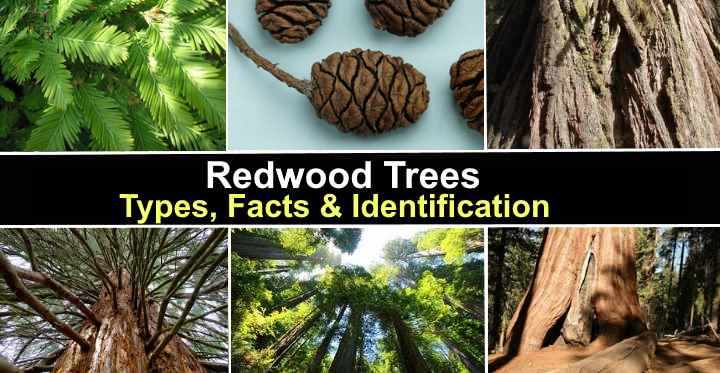
Redwood trees are the largest and tallest trees on the planet. Redwoods are famous for their towering stature, with the tallest trees reaching 360 ft. (110 m) tall—the same height as a 35-story skyscraper. As a coniferous evergreen tree, redwoods produce seed-bearing cones, green needle leaves, and tiny yellowish-brown flowers. Redwood bark is fibrous with furrows and can be up to 3 ft. (1 m) thick at the base of long columnar trunks.
The Pacific coast of northern California is home to redwood trees in the United States. The giant California redwood (Sequoia sempervirens) and giant sequoia (Sequoiadendron giganteum) thrive in northern California, Oregon, and Washington, where conditions for these vast trees are ideal. For redwoods in California to thrive, they need damp, cool air, summer fog, and mild winters to grow so tall.
This article is a guide to the immense and majestic redwood trees of California and Asia. Descriptions and pictures of these stately conifers will help identify species of redwoods.
What Are Redwood Trees?
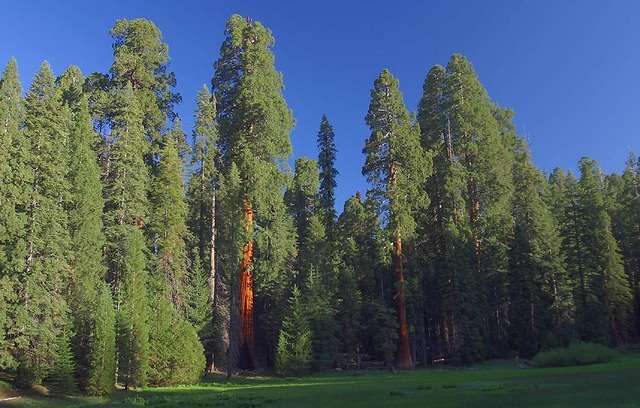
Redwood trees
Redwood and sequoia trees are species of coniferous trees in the subfamily Sequoioideae and the family Cupressaceae. The three redwood genera are Sequoia, Sequoiadendron, and Metasequoia. Two redwood species are native to California, and one—the dawn redwood—is native to China.
Redwood trees require specific environmental conditions to thrive. The coastal conditions of northern California are ideal for redwood growth. Redwoods require humid conditions with substantial rainfall in spring, fall, and winter. In addition, the foggy conditions common along the northern Pacific coast allows redwoods to thrive.
Redwood trees have a shallow but extensive roots system. The root area of a tall redwood or sequoia can measure up to 100 ft. (30 m) from the tree. Although they are relatively tolerant of drought, redwoods require constant moisture to survive. Plenty of humidity and rainfall ensure that redwoods grow rapidly.
Sequoia and redwoods are famous for their longevity. In the right conditions, California redwoods can live between 500 and 1,000 years. In the Sierra Nevada mountains in California, some giant sequoias are 2,000 and 3,000 years old.
How Tall Are Redwood Trees?
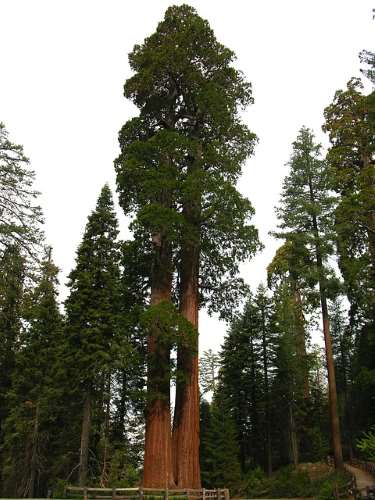
Some redwood trees can reach up to 360 ft. (110 m)
Giant redwood trees grow between 165 and 360 ft. (50 – 110 m) tall. The tallest recorded redwood tree is a California redwood that is 379.7 (115.7 m) tall. From the three redwood species, the coast redwood (California redwood) is the tallest, the giant sequoia in second place, and the dawn redwood is the smallest at around 165 ft. (50 m) tall.
Types of Redwood Trees
Let’s look briefly at the three species of trees in the Sequoioideae subfamily:
- Giant Redwood (Sequoiadendron giganteum)—Also called the giant sequoia, this tall ornamental evergreen redwood grows between 164 and 280 ft. (50 – 85 m) tall on average with a trunk diameter up to 30 ft. (9 m). Giant sequoias grow mainly in western Sierra Nevada forests and thrive in humid climates and mild winters.
- Coast Redwood (Sequoia sempervirens)—This redwood also goes by the name California redwood. The long-living evergreen conifer grows up to 380 ft. (116 m) tall with a trunk diameter of 30 ft. (9 m). Coastal redwoods grow along the northern coast of California. The tall redwood conifers have a recognizable pyramidal crown and slightly drooping branches.
- Dawn Redwood (Metasequoia glyptostroboides)—The only deciduous type of redwood is the dawn redwood, native to China. This fast-growing deciduous conifer typically reaches between 130 and 150 ft. (40 – 45 m) tall. Dawn redwoods are popular landscaping trees for parks and extensive gardens.
Sequoia vs. Redwood
Trees in the family Sequoioideae are typically all referred to as redwoods. Even though redwood trees and sequoia trees are closely related, they have some distinguishable characteristics. Here are the four significant differences between sequoias (Sequoiadendron giganteum) and redwoods (Sequoia sempervirens):
Leaves: Coast redwoods have needle-like leaves similar to hemlock trees, whereas giant sequoias have scale-like needle leaves like juniper trees.
Cones: Redwoods have significantly smaller cones compared to cones from sequoia trees.
Reproduction: Coast redwoods are one of the few coniferous tree species that can reproduce by seed and suckers that sprout from roots and stumps.
Size: Sequoias are the largest trees in the world in terms of volume, and they have immense trunks. Redwoods are the tallest trees and have slender trunks.
Redwood Tree leaves
Redwood trees have variable leaves depending if they grow at the upper canopy or lower down the tree. At the crown, evergreen redwood needles grow up to 0.4” (1 cm) long, are pointed, narrow, and oblong, and grow spirally like cedar or juniper leaves. Redwood leaves growing on lower branches are flattened and longer.
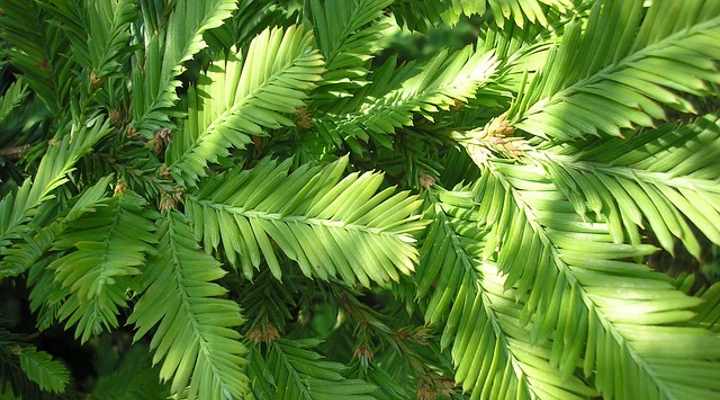
Coast redwood (Sequoia sempervirens) leaves on the lower canopy
Another feature of redwood tree leaves is their dark green color on the upper side, with two bluish-white bands on the underside. Redwoods and sequoias native to the US have evergreen foliage.
Redwood Tree Bark
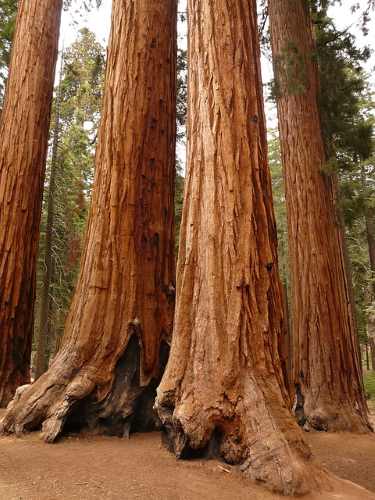
Sequoia (Sequoiadendron giganteum) tree bark
The cinnamon-red or bright reddish-brown bark is one way to identify redwood trees. A redwood tree has recognizable spongy bark and is a dull chocolatey brown color. Giant sequoias are identified by their fibrous bark that is a brighter red-brown color. You can also tell redwood trees because the reddish bark pulls away easily.
Redwood Tree Flowers
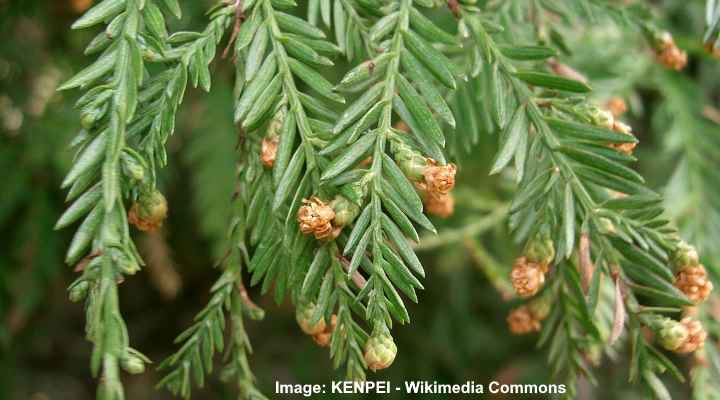
Coast redwood (Sequoia sempervirens) pollen-producing male flowers
Redwood trees produce small, insignificant yellowish-brown flowers that blossom on the ends of needle leaves. Redwood flowers blossom in December and January. However, it isn’t easy to see the flowers from the ground because they are so tiny and far up in the forest canopy.
Redwood trees produce male and female flowers on the same tree. However, the pollen-producing male flowers are typically on the lower canopy, and the greenish female flowers are on the upper canopy. Pollinated female flowers develop into seed-bearing cones, typical of all coniferous trees.
Redwood Tree Cones
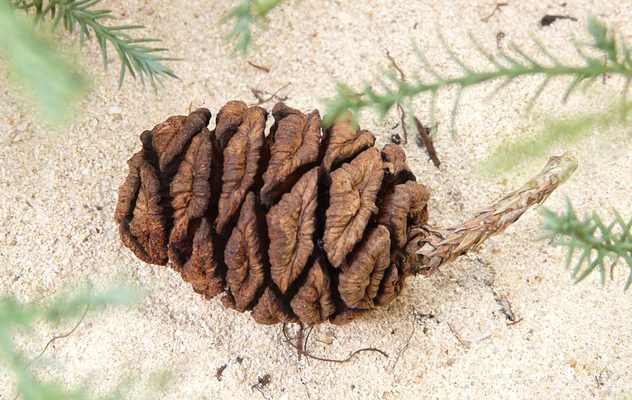
Sequoia cones (in the picture) are larger than redwood cones
Redwoods and sequoias are identifiable by the size of cones the conifers produce. Redwood tree cones are brown, egg-shaped, and measure 1” (2 cm) long, about the size of a golf ball. Giant sequoia cones are three times larger and grow up to 3” (7.5 long). All native redwood cones are made up of spirally arranged woody scales.
It is difficult to identify a giant sequoia from a California redwood from the ground due to their immense size. So, examining the size of cones lying on the ground will help you recognize the type of redwood growing in the forest.
Redwood Tree Seeds
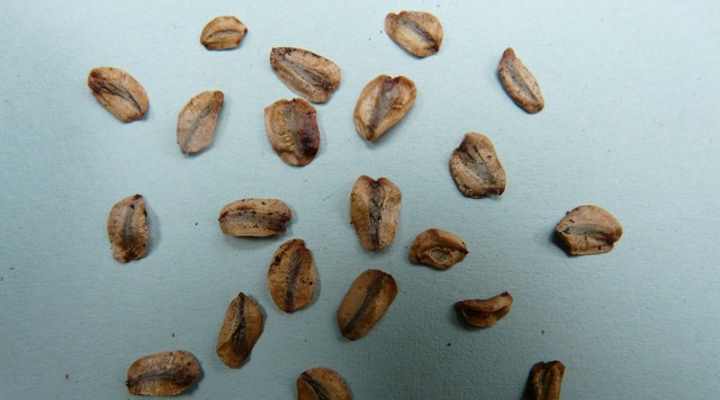
Redwood tree seeds
Redwood tree seeds develop in the female cones and are released when the cones dry out. The tiny, winged tree seeds are dark brown. Coastal redwood cones have three to seven seeds in a cone. However, the giant sequoia can have up to 230 seeds in the large ovoid-shaped cones.
Redwood Tree Growth Rate
Redwood trees are classified as fast-growing trees, and growth can average 2 to 3 ft. (0.6 – 1 m) per year in ideal conditions. All species of redwood trees live for at least 150 years and mature over 100 ft. (30 m) tall when cultivated. In redwood forests, the giant sequoias can reach dizzying heights of over 300 ft. (90 m).
Planting Redwood Tree
Planting a redwood tree can create a spectacular vertical accent or shade tree in a large garden landscape. You grow redwoods from seed and then plant the redwood saplings in the ground. It usually takes 12 months for a redwood to grow one or two feet (0.3 – 0.6 m) tall.
To plant a redwood tree, first, soak the seeds overnight or store in a refrigerator for a few days. Next, sprinkle the seeds on moist potting soil and slightly cover with soil. Then place in a sunny spot and keep the soil moist until seedlings appear. Finally, transfer the most vigorous seedlings to separate pots to encourage growth.
When the sapling reaches about 1 or 2 ft. (30 – 60 cm) tall, you can plant the redwood in the ground. Pick the sunniest part of your garden, making sure the tree is at least 50 ft. (15 m) away from buildings and power-lines.
Redwood Tree Identification
The best way to identify a species of redwood is by its needle leaves, distinguishable cones, and fibrous bark. First, look for reddish-brown trees and inspect the bark. Redwoods are identified by their fibrous or spongy bark. Then look for cones. Giant sequoias are easy to identify due to their huge woody cones.
In a landscape, redwoods are also easy to recognize because of their conical canopy and the fact that they are the tallest trees growing in the forest.
Types of Redwood Trees
Let’s look in more detail at the three redwood species.
California Redwood or Coast Redwood (Sequoia sempervirens)
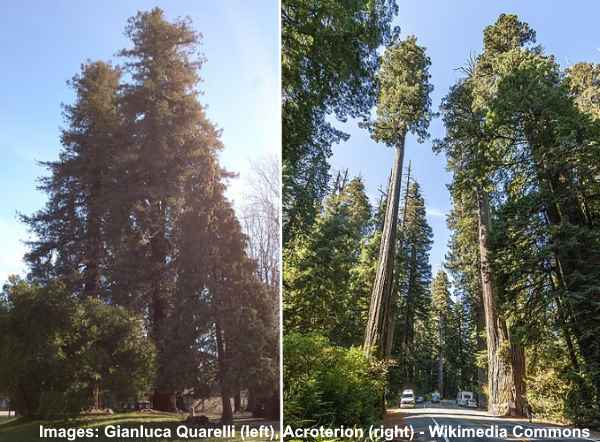
California Redwood or Coast Redwood (Sequoia sempervirens)
The California redwood is identified by its straight, tall trunk, thick reddish-brown bark, slightly drooping branches, and conical crown. Like all conifers, the redwood has needle leaves and brown seed cones. As the largest tree species in the world, California redwoods grow up to 380 ft. (115 m) tall with a girth of 30 ft. (9 m).
California redwood also goes by the name coastal redwood. This common name refers to the tree’s natural habitat along the Pacific coast in California. Other names for the species of redwood include coastal sequoia, Palo Colorado, or simply—redwood.
Coastal redwood cones are small, oblong egg-shaped seed cones that measure 1” (2.5 cm) long. Each cone contains up to seven winged seeds that are about the size of a tomato seed.
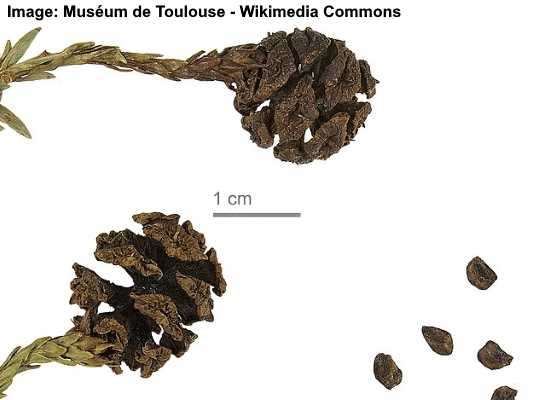
Sequoia sempervirens cones and seeds
California redwood bark is a reddish-brown color with furrowed, scaly ridges. The redwood bark is thick, measuring up to 12” (30 cm) thick. You can easily identify a California redwood by the soft feel of the fibrous bark. You will also notice that the cinnamon brown trunks have buttresses at the bottom.
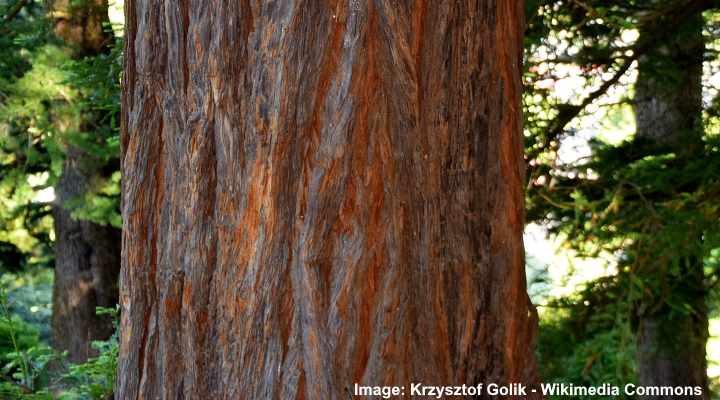
Sequoia sempervirens bark
Redwood tree leaves

Sequoia sempervirens leaves on the lower canopy
California redwood tree leaves have two different types of needles. The needle leaves on the lower canopy are flat sprays with long needles measuring 1” (2.5 cm) long. The shorter conifer leaves on the upper branches grow on long shoots and only measure 0.4” (1 cm) long.
Redwood identification
The California redwood is identified by a slender, straight trunk and pyramidal canopy high up on the tree made up of slightly drooping branches. You can also spot California redwoods in the forest by sprouts emerging from the roots.
Giant Redwood or Giant Sequoia (Sequoiadendron giganteum)
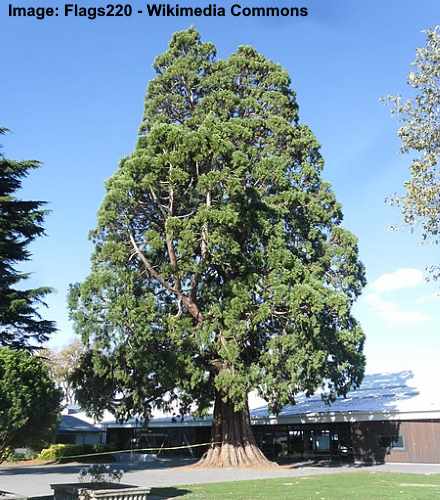
Giant Redwood or Giant Sequoia (Sequoiadendron giganteum)
The giant sequoia or giant redwood is an impressive conifer with reddish-brown spongy bark, large brown cones, broadly pyramidal crown, and blue-green needle leaves. Giant sequoias grow between 165 and 280 ft. (50 – 85 m) tall and up to 60 ft. (18 m) wide. As a popular ornamental tree, the giant sequoia is impressive to look at in redwood forests.
The giant sequoia also has the common names Sierra redwood, Wellingtonia, giant redwood, and big tree. Compared to the California redwood, the giant sequoia is overall more immense in terms of trunk size. Also, the massive sequoia trees grow in a limited area and are fewer in number.
Giant redwood cones are the largest of all the species of redwoods. The huge reddish-brown cones grow up to 3” (7.5 cm) long and 2” (5 cm) wide. Each cone can contain hundreds of tiny seeds. A single giant sequoia can produce as many as 11,000 cones.
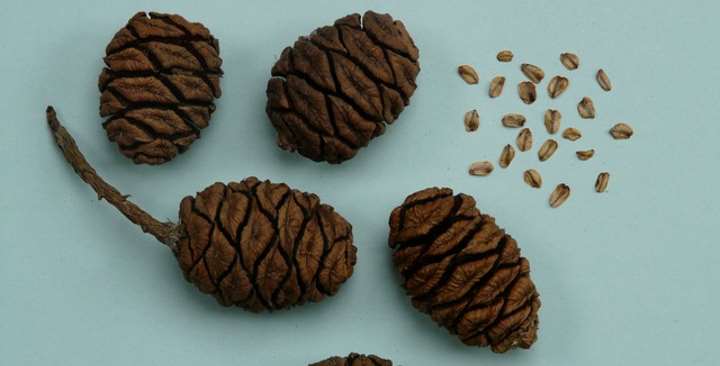
Sequoiadendron giganteum cones and seeds
Giant sequoia bark is cinnamon-brown with distinct furrows and ridges running longitudinally. Up close, you’ll notice that the soft bark has a distinctive spongy feel to it, making it easy to distinguish from the California redwood. The soft bark is also why the giant sequoia is called the ‘boxing tree’—it’s so soft you can punch it.
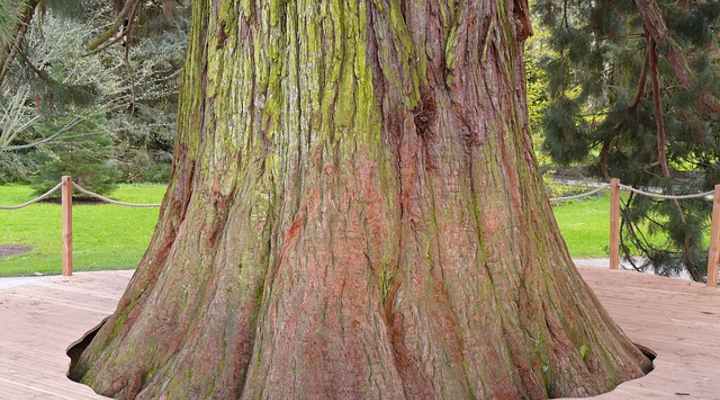
Sequoiadendron giganteum bark
Redwood tree leaves
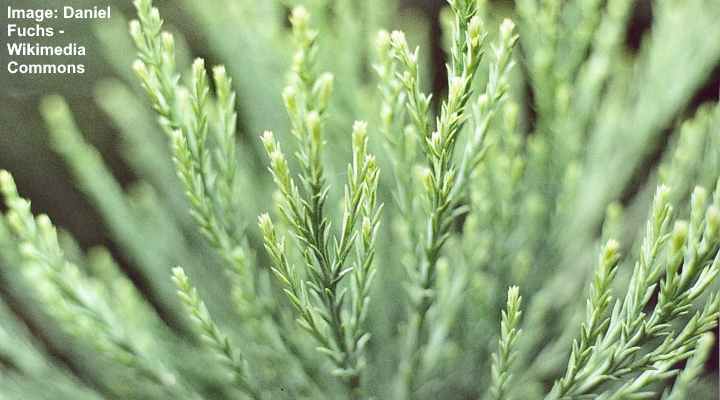
Sequoiadendron giganteum leaves
The giant sequoia redwood has awl-shaped, bluish-green needle leaves arranged spirally on a stem. The short, soft needles measure 0.2” (0.6 cm) and form upward-pointing sprays. In winter, small yellowish or green tufts appear as flowers on the ends of leaves.
Redwood identification
The giant sequoia is identified by its distinctive spongy red bark, large seed cones, and thick trunks. For identification, look for the short leaves of a giant redwood. In addition, the 3” (7.5 cm) egg-shaped cones lying on the ground and soft red bark on a massive trunk can help to tell a sequoia apart from a redwood.
Dawn Redwood (Metasequoia glyptostroboides)
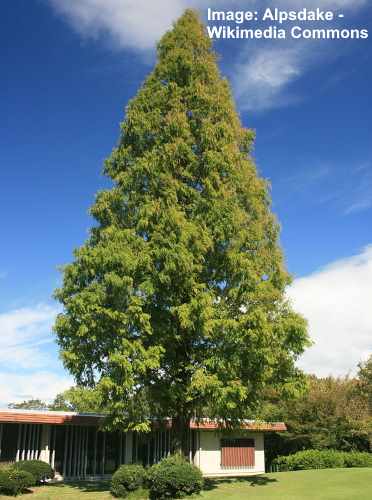
Dawn Redwood (Metasequoia glyptostroboides)
The dawn redwood is a deciduous conifer with dark green pinnate, needle leaves, light brown barrel-shaped cones, and dark brown bark growing on a broad trunk. Dawn redwoods have a broad, conical crown, and the redwood grows between 60 and 100 ft. (18 – 30 m) tall and up to 25 ft. (7.6 m) wide.
Dawn redwoods are native to China, where they thrive in humid conditions, damp soil, and full sun. Because the dawn redwood is the smallest of the redwood species, it’s a popular choice for planting in parks, open landscapes, and along streets.
Dawn redwood cones dangle in pendulous clusters and are less than an inch (2.5 cm) in size. The barrel-like redwood cones are dark brown when mature. The ovoid cones are made up of 16 to 28 scales arranged in pairs at right angles.
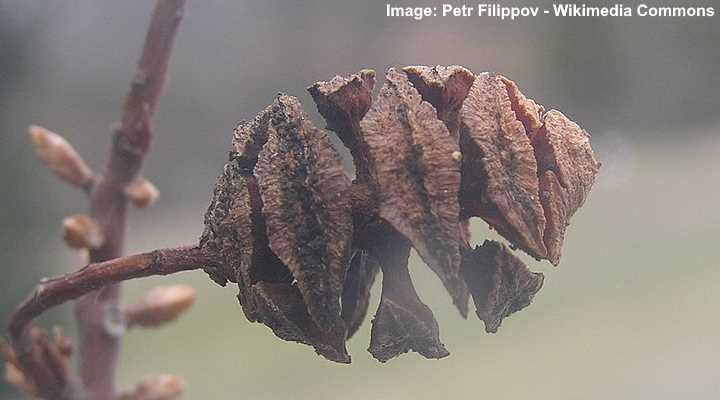
Metasequoia glyptostroboides cone
An unusual feature of dawn redwood tree growth is that growing conditions affect the tree size, bark thickness, cone size, and canopy. For example, dawn redwoods growing on mountain slopes have a larger canopy, bigger cones, and faster growth than redwoods growing in ditches and creeks.
Dawn redwood bark is dark brown or reddish-brown with deep fissures running vertically. As the tree matures, the base of the trunk widens considerably. The fibrous redwood bark peels off in ribbon-like strips.
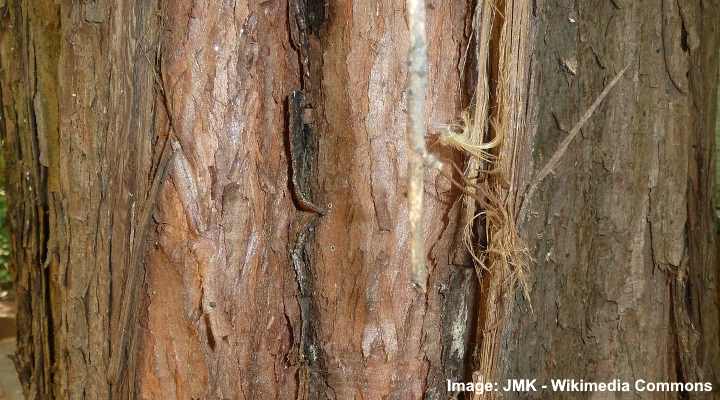
Metasequoia glyptostroboides bark
The main difference between dawn redwoods and other types of redwoods is the fact it’s a deciduous tree. In the fall, dawn redwood foliage turns a brown-copper color before the conifer leaves fall to the ground.
Redwood tree leaves
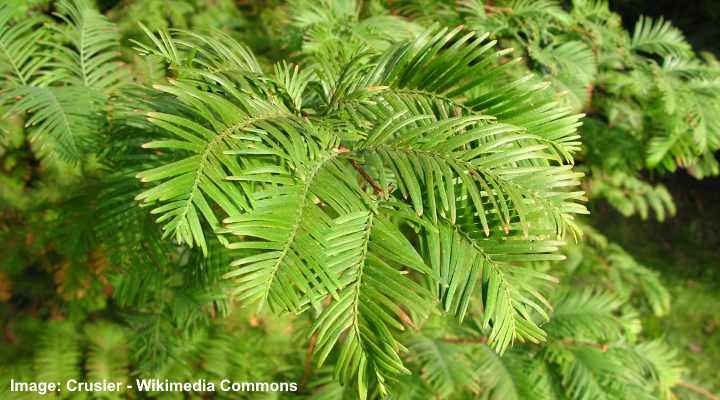
Metasequoia glyptostroboides leaves
Dawn redwood tree leaves are needles arranged oppositely on short stems. The leaves are feathery and fern-like to look at. Dawn redwood leaves grow between 1 and 3 cm (2.5 – 7. 5 cm) long. The tree’s foliage appears in early spring, and the redwood leaves turn reddish-bronze in the fall before dropping.
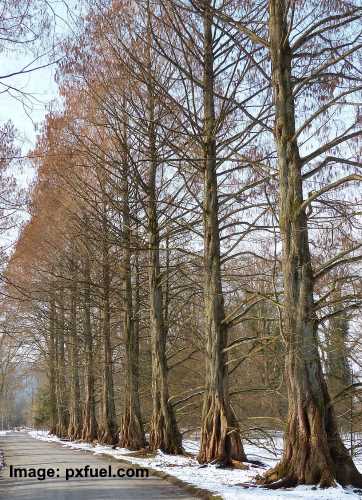
Metasequoia glyptostroboides in winter
Redwood identification
A dawn redwood tree is identified by its fibrous reddish-brown trunk, rounded crown, clusters of dangling barrel-shaped cones, and dark green fern-like leaves that turn a light bronze color in the fall.
Related articles:
